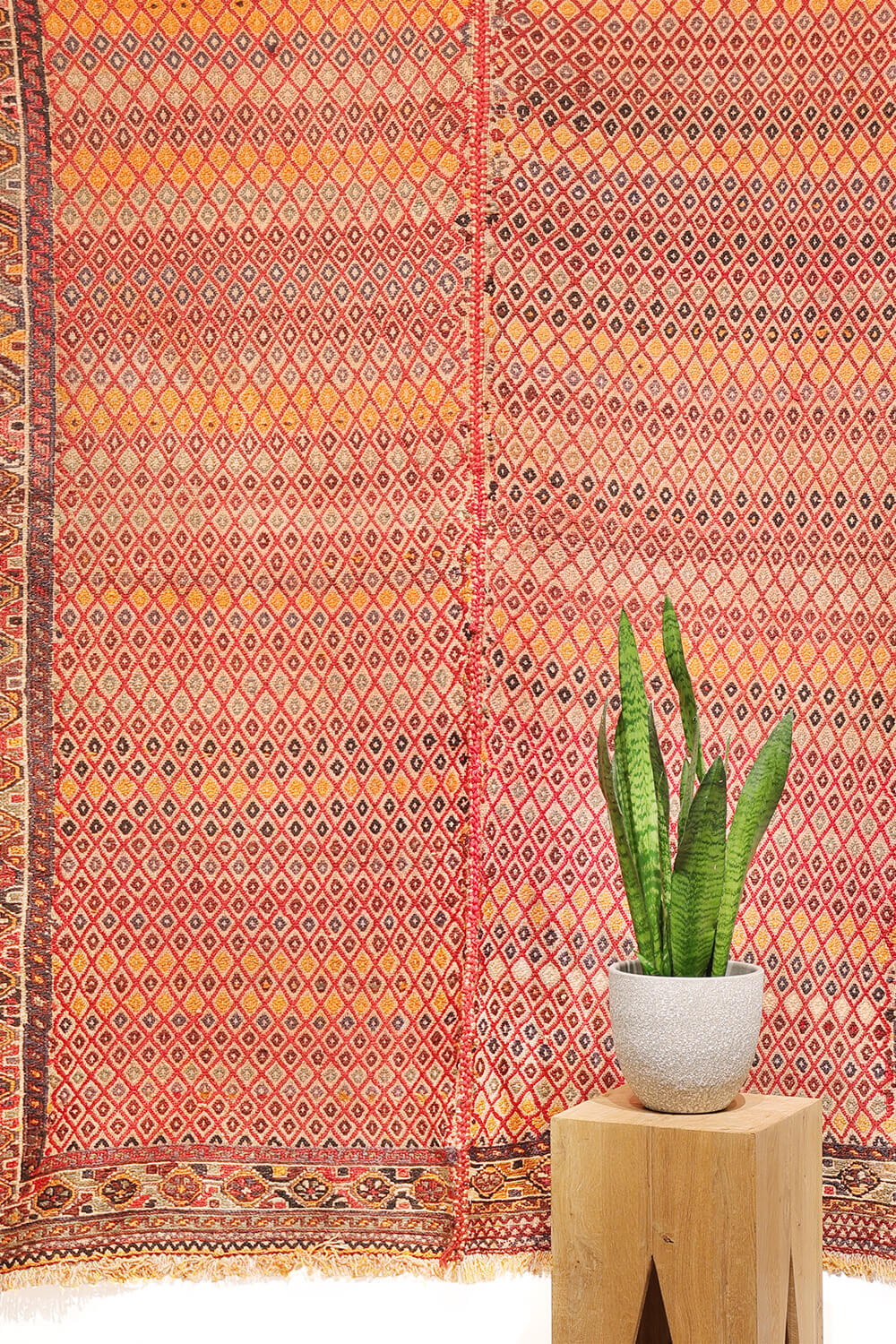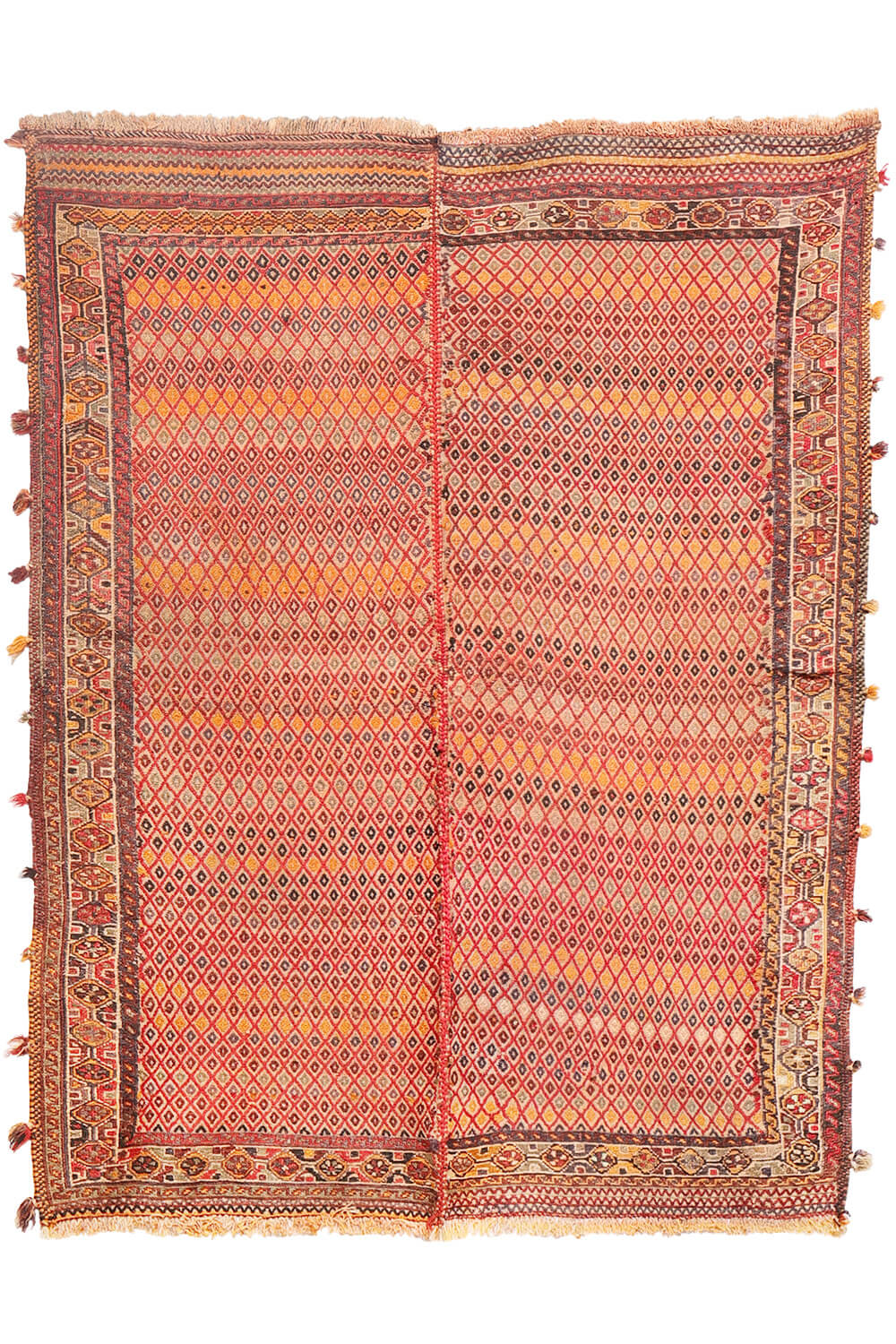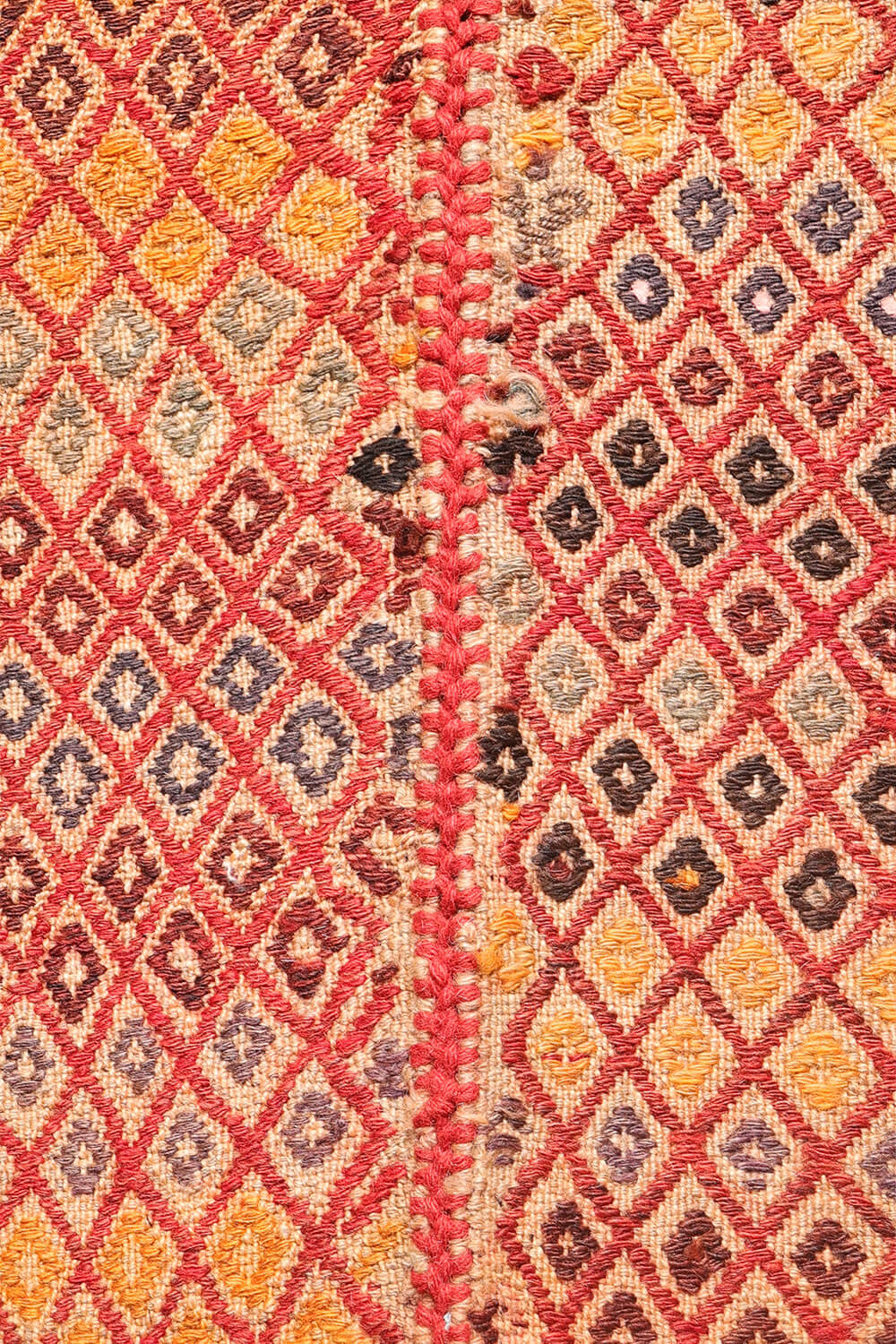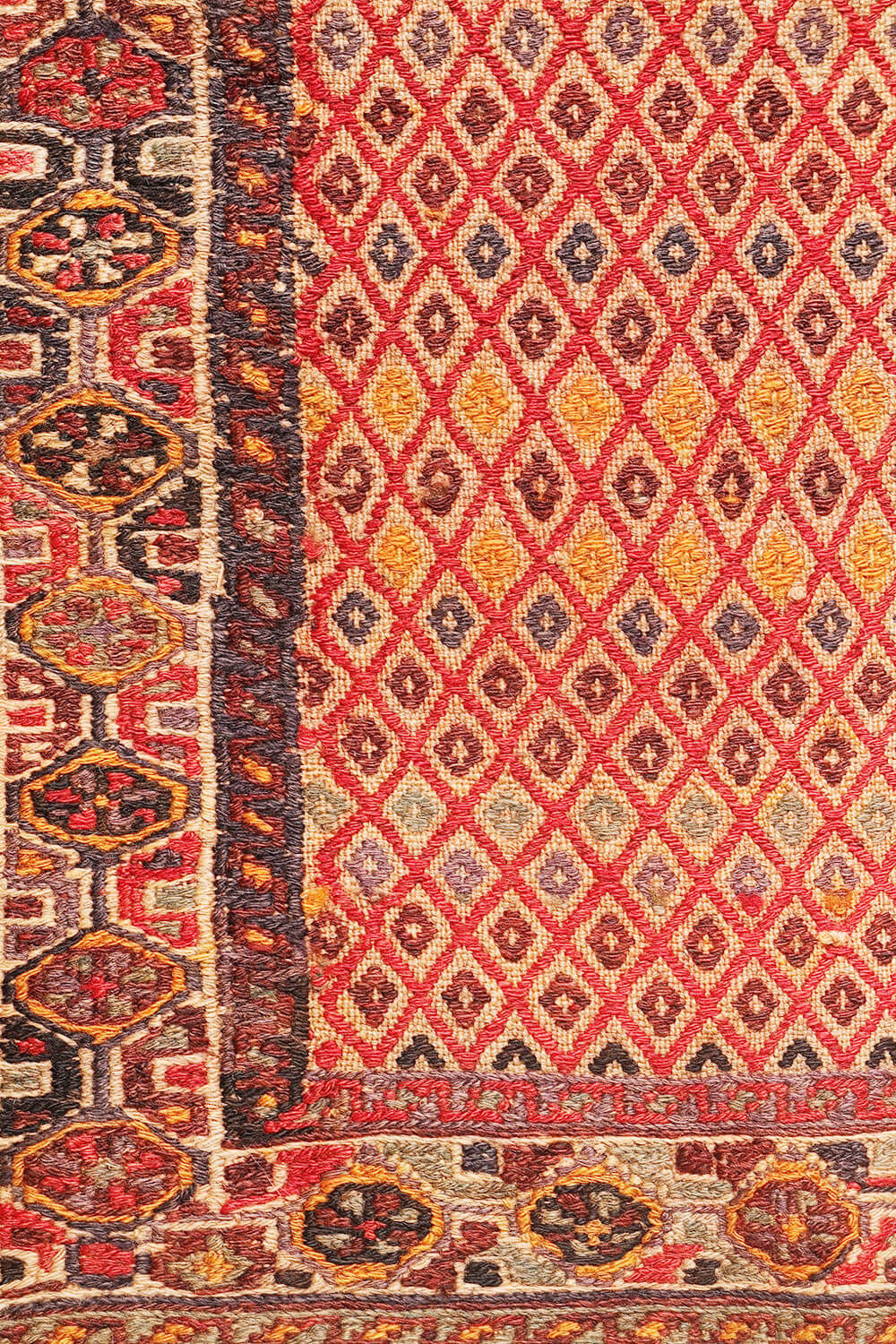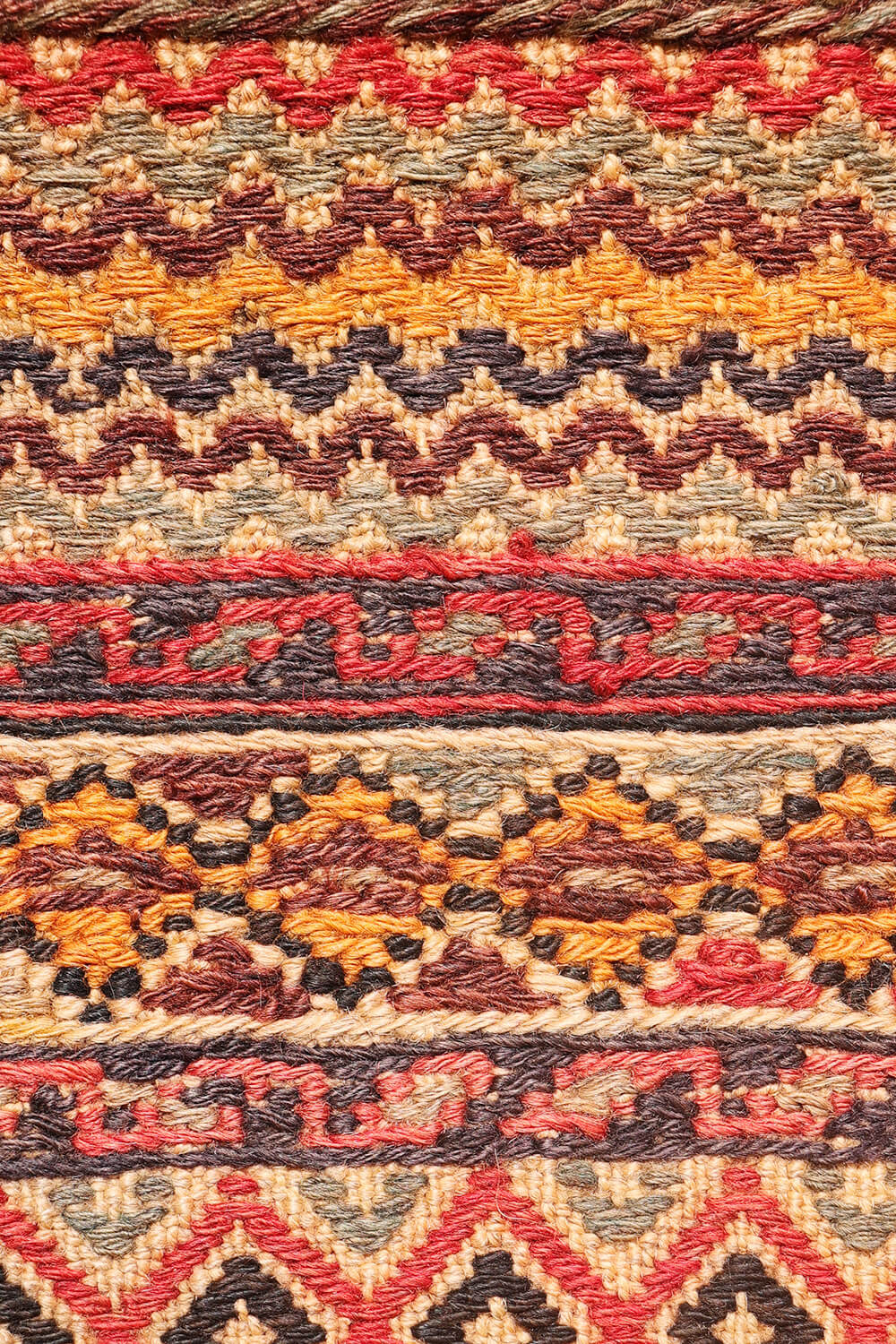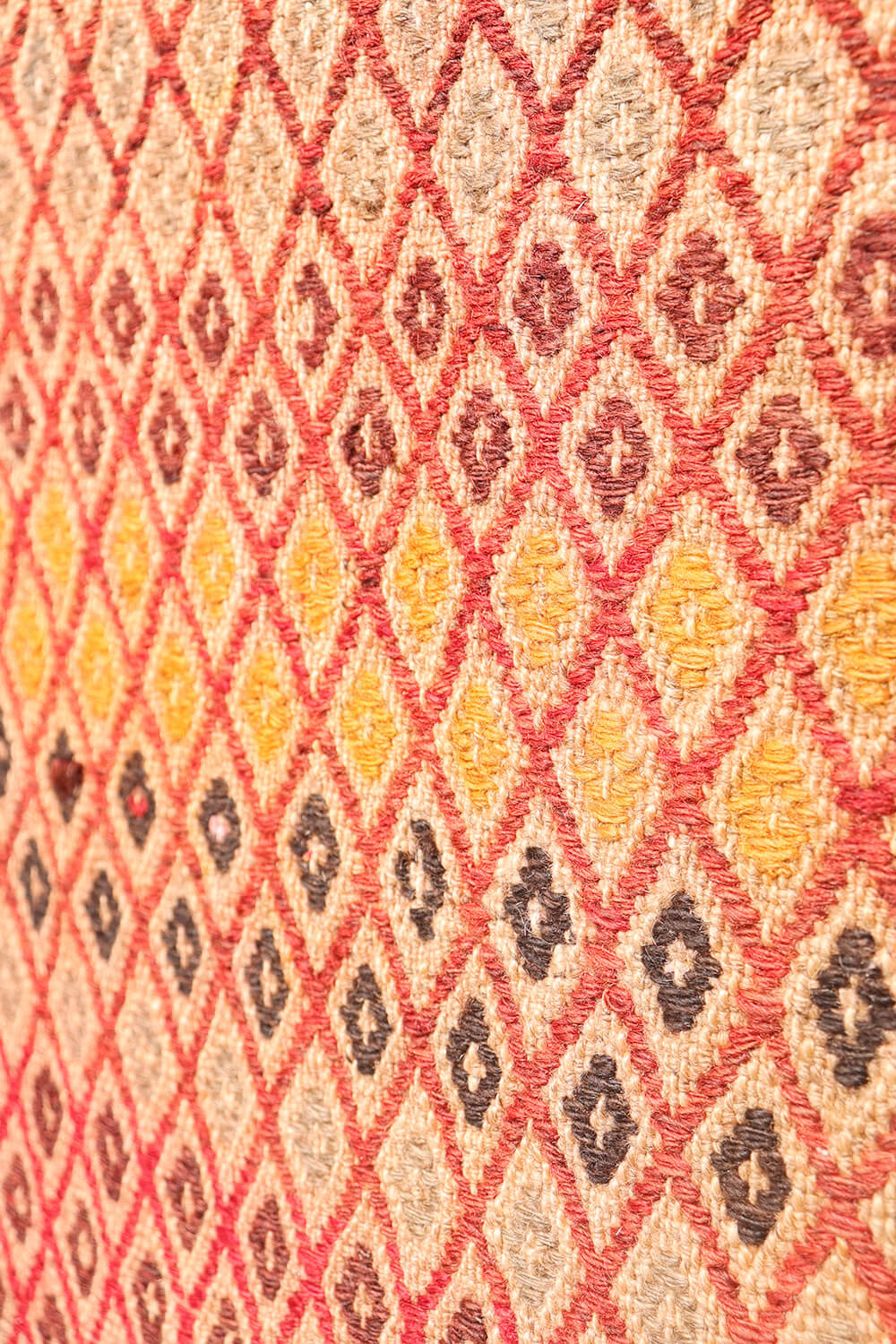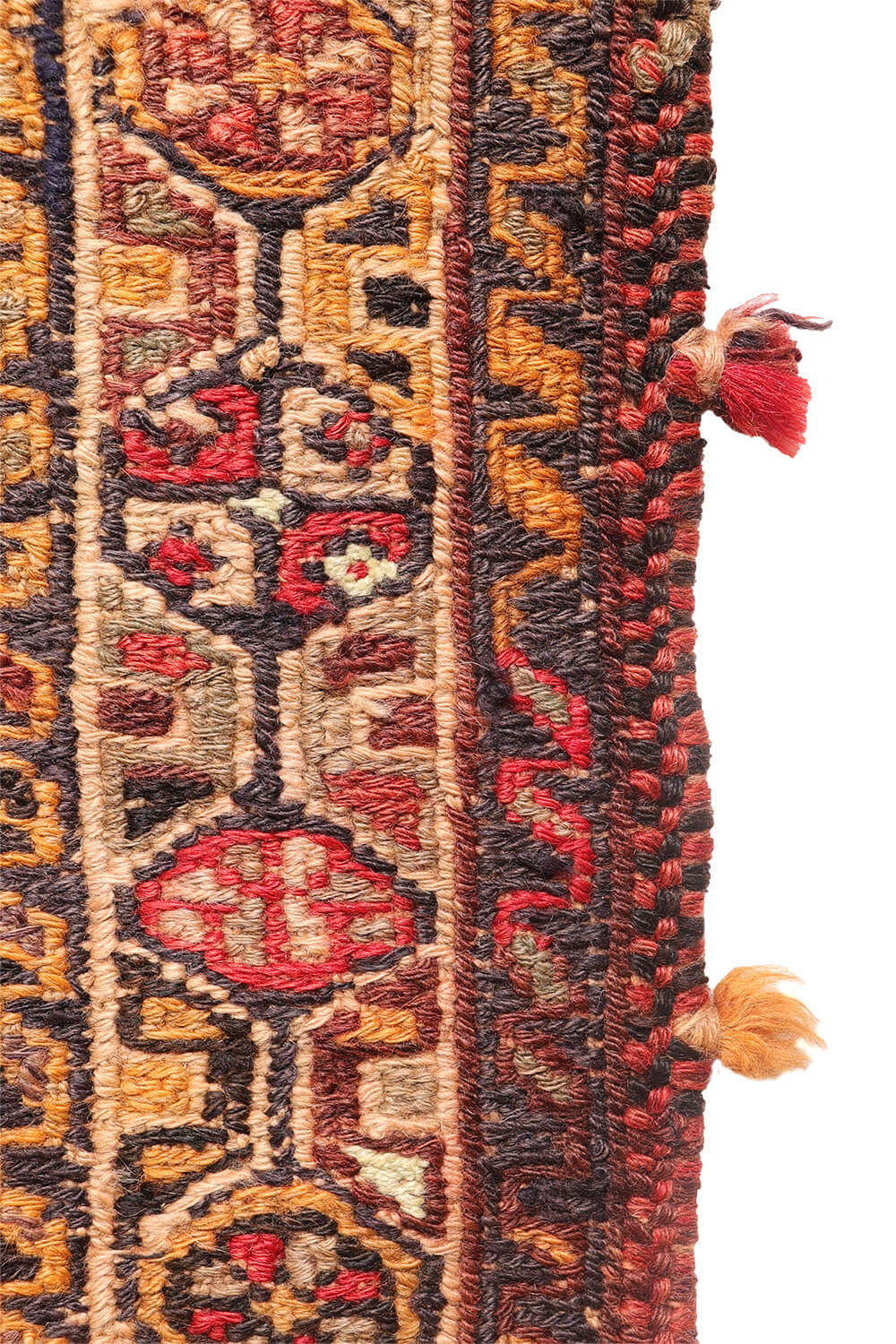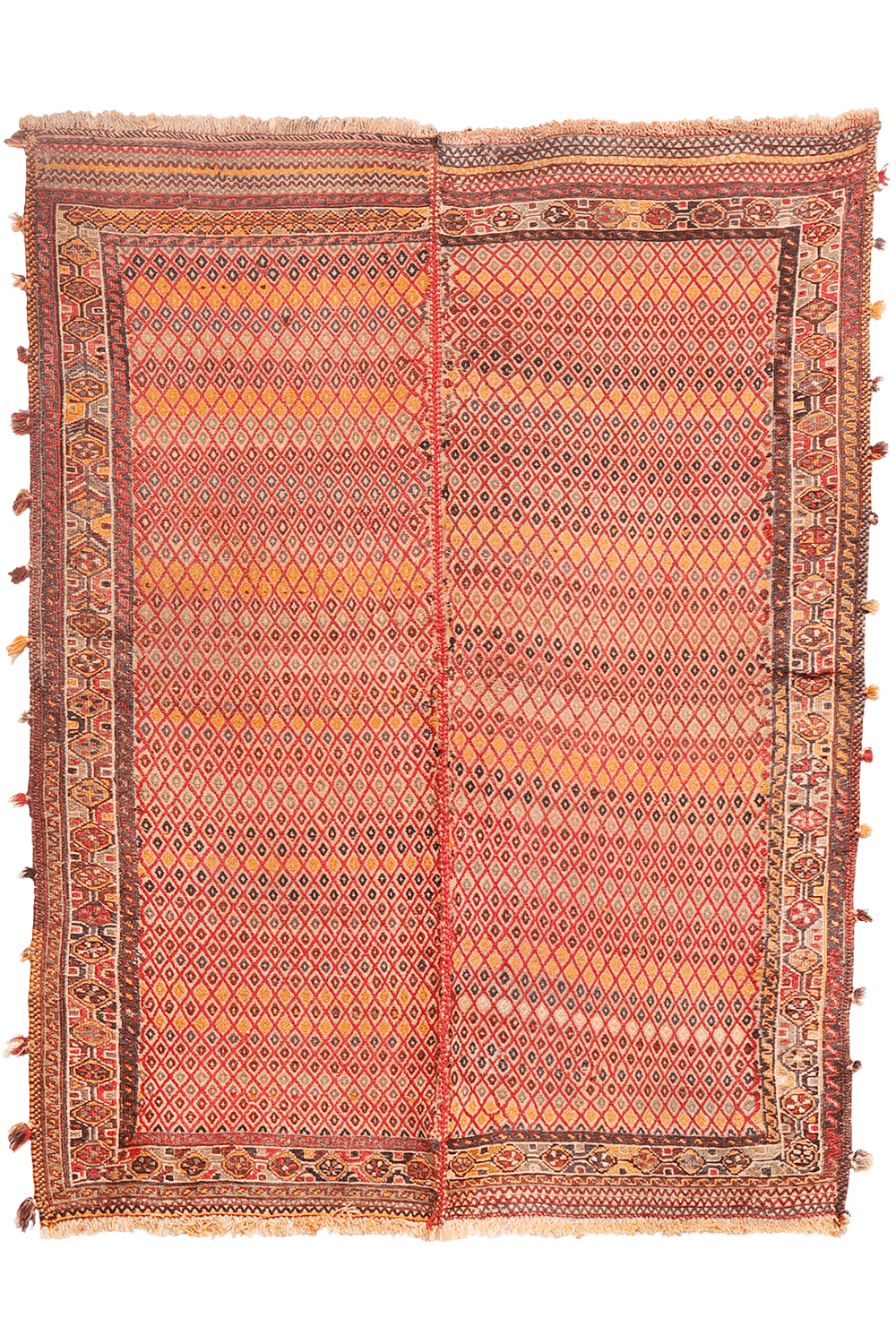950.00 €
This type of kilim is known locally in southern Iran as a shiraki—a term that literally means “needle work.” Interestingly, despite the name, shiraki kilims are woven on a loom rather than sewn by hand. Traditionally, due to the small size of village looms, these kilims were crafted in two narrow panels and then carefully joined to create a nearly square piece, as can be seing in this piece.
The design features a structured grid that covers the entire surface, with each square containing a small motif that may represent a flower or serve as a symbolic protection against the evil eye. Along the border runs a series of geometric motifs with flowers with their petals skilfully woven.
The shiraki pieces woven by Arab tribes, normally have a red, maroon or orange background. It is less common to find shirakis with natural undyed wool (beige) as the background colour.
Material: 100% hand-spun sheep wool
Size: 200×160 cms
Origin: Arab tribe from Iran
Date of weaving: 1950-60’s
Arab nomads of Fars Province, Iran, are descended from certain Arab tribes of Najd, Yammaneh and Omman who migrated in the 7th and 8th centuries following the Arab contest (640 A.D.) and the advent of Islam. They speak a corruption of Arabic and Persian.
Althoug Arab nomad piled production encompasses a great and astonishing variety of designs, with field patterns much more varied than other tribes of Fars, the Arab weaver´s adherance to a generally dark and sober palette has denied them the artistic recognition they deserve.
1 in stock
Additional information
| Weight | 8.3 kg |
|---|
Subscribe and receive the lastest news
